Mastering fresh gluten free pasta has been on my extensive ‘to do, make, eat’ list for a very long time. I needed expert help here so I sought the guidance of my super talented friend, pastry chef Angela Palermo from The Village Cooks. Trust me Ang ticks all the boxes. Italian, tick. Making pasta from the age of 5 with her Nona, tick. Hilarious and lovely, tick. Will feed me copious amounts of pasta, tick. I couldn’t wait to get into the kitchen with Ang to perfect this gluten free pasta recipe.
After a fabulous day playing with pasta dough and different gluten free flours in the kitchen what resulted was the silkiest, most delicate, most beautiful gluten free pasta I have ever tasted. It tastes like regular pasta and is honestly so easy to make, just a simple combination of two gluten free flours – brown rice flour and tapioca. Brown rice flour is a little coarser than other gluten free flours so it holds its shape well and tapioca adds a lovely lightness and silkiness to the pasta strands.
The pasta machine in these images is the Marcato pasta machine ,a fantastic high quality pasta roller. If you prefer an electric roller I highly recommend the pasta attachments that come with the Kitchen Aid. The pasta attachments are easy to use and free up your hands to handle the pasta sheets. You will find most pasta machines have very similar settings and you will know if you have rolled the dough too thinly because it will begin to tear. I recommend resting the dough for 30 minutes prior to rolling to allow the flour to absorb the moisture properly. This makes the gluten free pasta dough easier to work with. If your dough is too sticky at any stage of the process dust with extra tapioca flour.
Initially your gluten free pasta dough will look dry and brittle when you roll it through the pasta machine but don’t worry because it will come together as you keep rolling. Just keep folding and rolling on the widest setting 3-4 times until the pasta sheet starts to smooth out. Dust with a little extra tapioca flour between roller settings to stop the pasta strands sticking together when cut.
Once your pasta is made you have two options – cook it immediately or freeze it. Do not place fresh pasta in the fridge because the moisture will change the texture and it may turn gummy. Fresh gluten free pasta does not take long to cook, just 3-5 minutes depending on the thickness of the strands. To freeze the pasta place it in an airtight container and freeze up to 3 months.
Serve your gluten free pasta with your favourite sauce and a generous scattering of fresh herbs and parmigiano-reggiano. Bellissimo!
- 2 cups or 280g brown rice flour
- ⅔ cup or 80g tapioca flour
- 1½ tsp xantham gum
- 5 large eggs
- ½ tsp sea salt
- Add dry ingredients to a mixing bowl and stir to combine. Add eggs to mixing bowl and beat until dough forms. If you prefer to manually form dough tip flour onto a clean bench and create a well in the centre, stir eggs into the flour with a fork until dough forms.
- Dust your workbench with extra tapioca flour and knead dough several times to form a smooth ball. Cover dough with a towel and rest for 30 minutes. Divide dough into 5 portions. Start with one portion and cover the others with a cloth to stop dough from drying.
- Flatten dough into a rectangular shape and roll through a pasta machine on the widest setting. Initially the dough will look dry and brittle but keep folding and rolling. Fold the pasta sheet into an envelope shape and roll through machine again at the same setting 3 - 4 times to smooth.
- Roll sheet at each setting once until you reach setting your desired thickness, this is usually between setting 5-7 depending on your machine. As you move between settings dust dough with a little extra tapioca flour to prevent pasta strands sticking together. Halfway through the rolling process you will need to divide the dough sheet into three portions (about 20 cm each) to make the pasta easier to work with. Pass the final sheet through the fettuccine or spaghetti rollers for delicate strands.
- Cook pasta in a pot of salted boiling water for 3 - 5 minutes (3 minutes for al dente and 5 minutes for a softer pasta). Serve with your favourite pasta sauce.

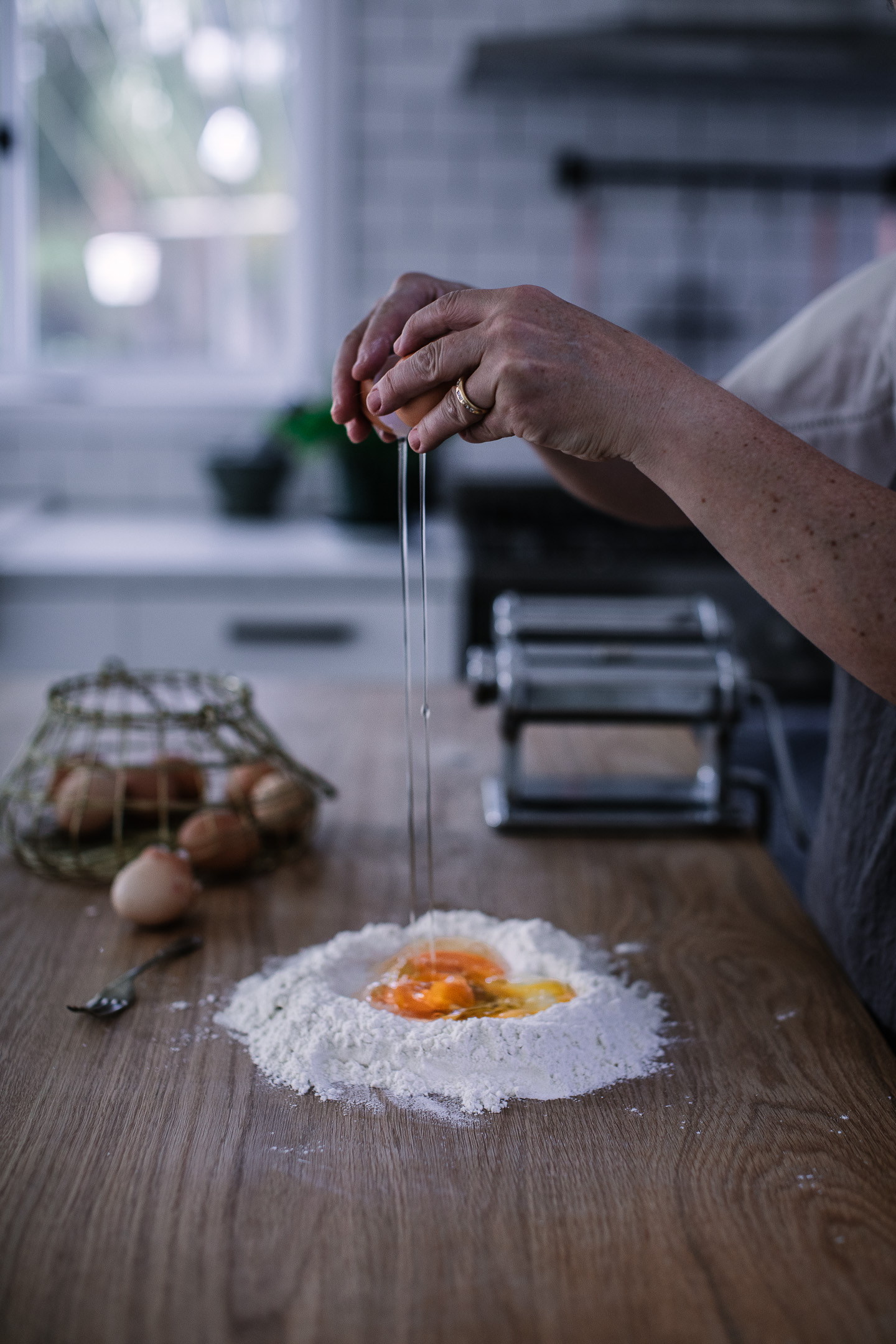
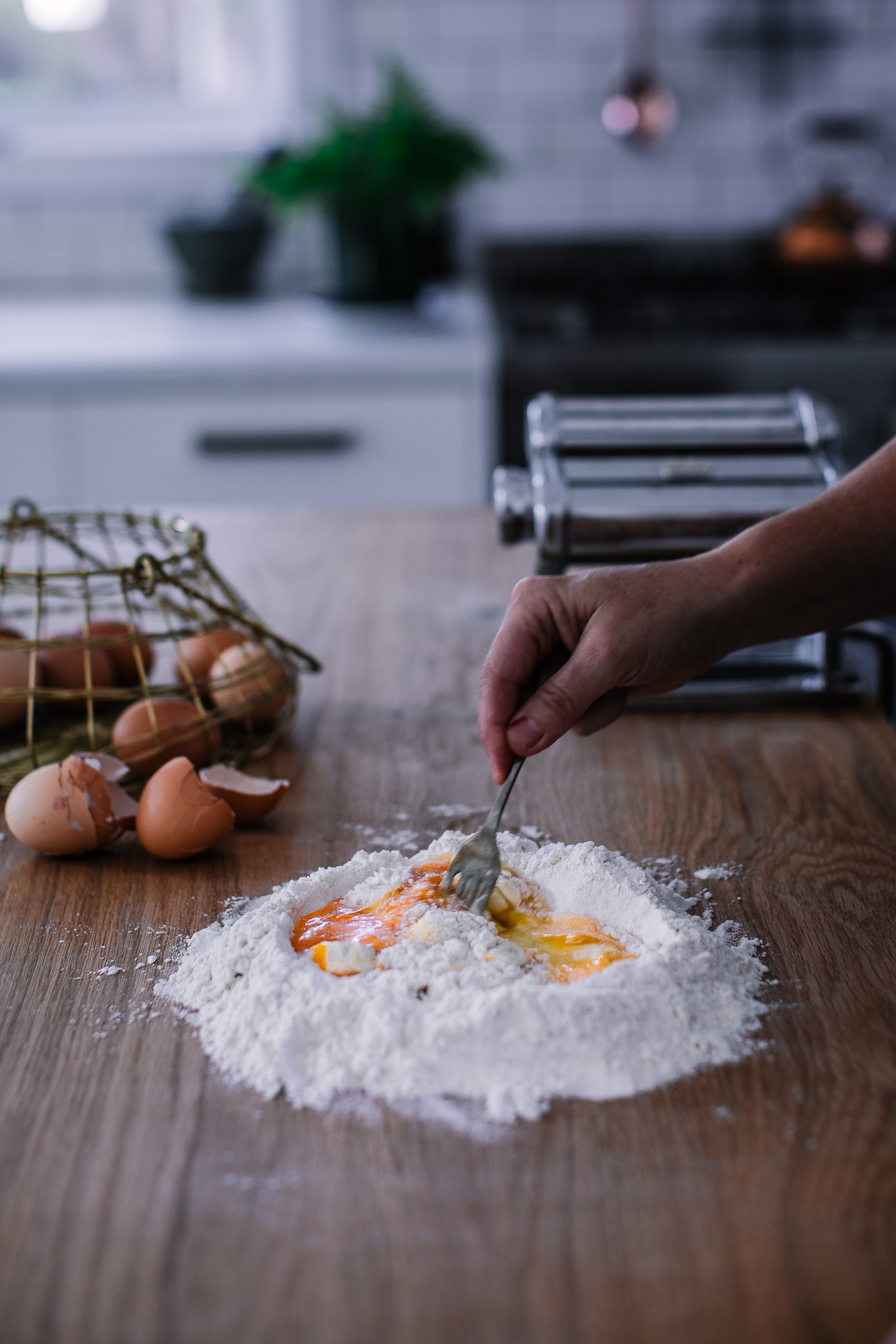
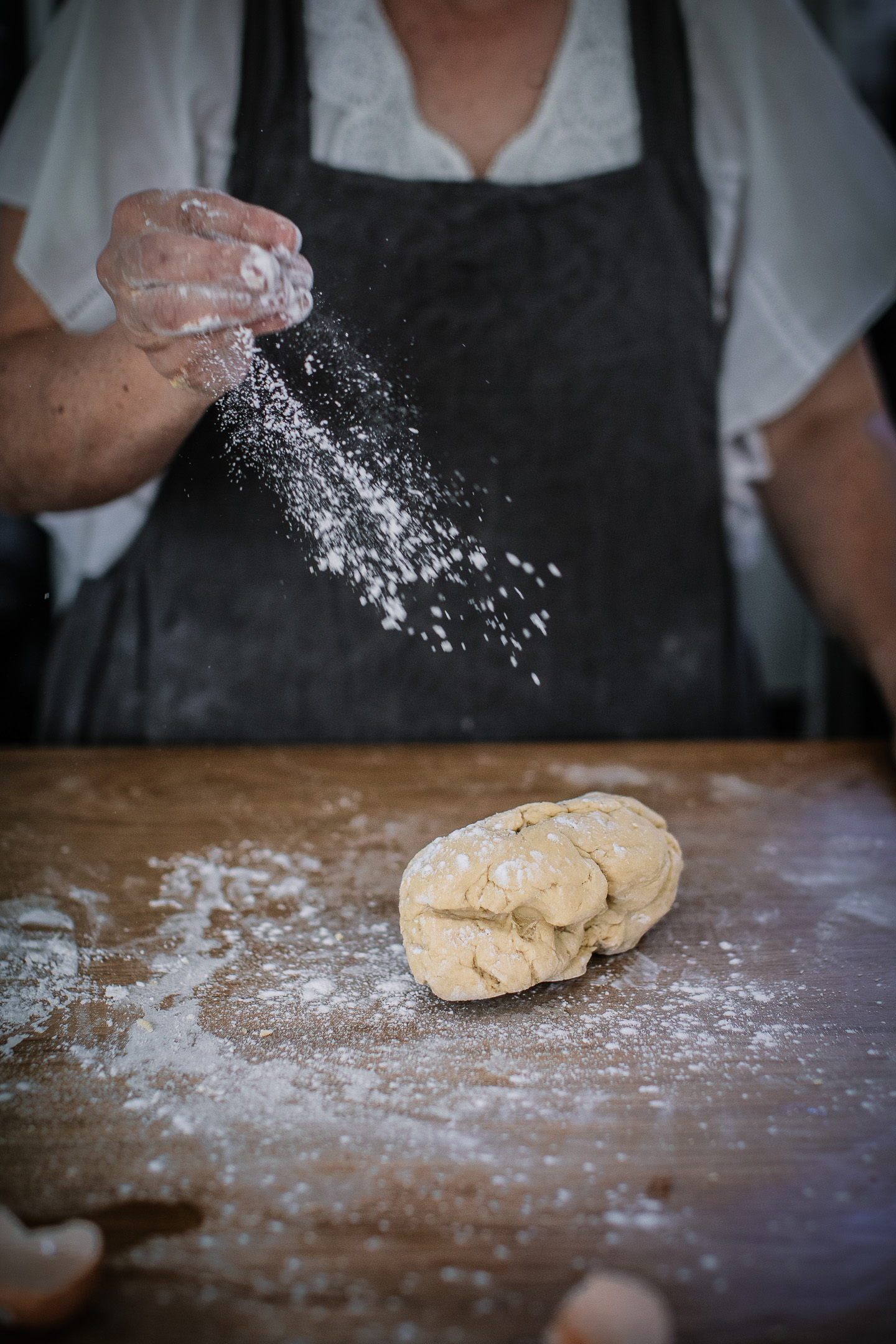

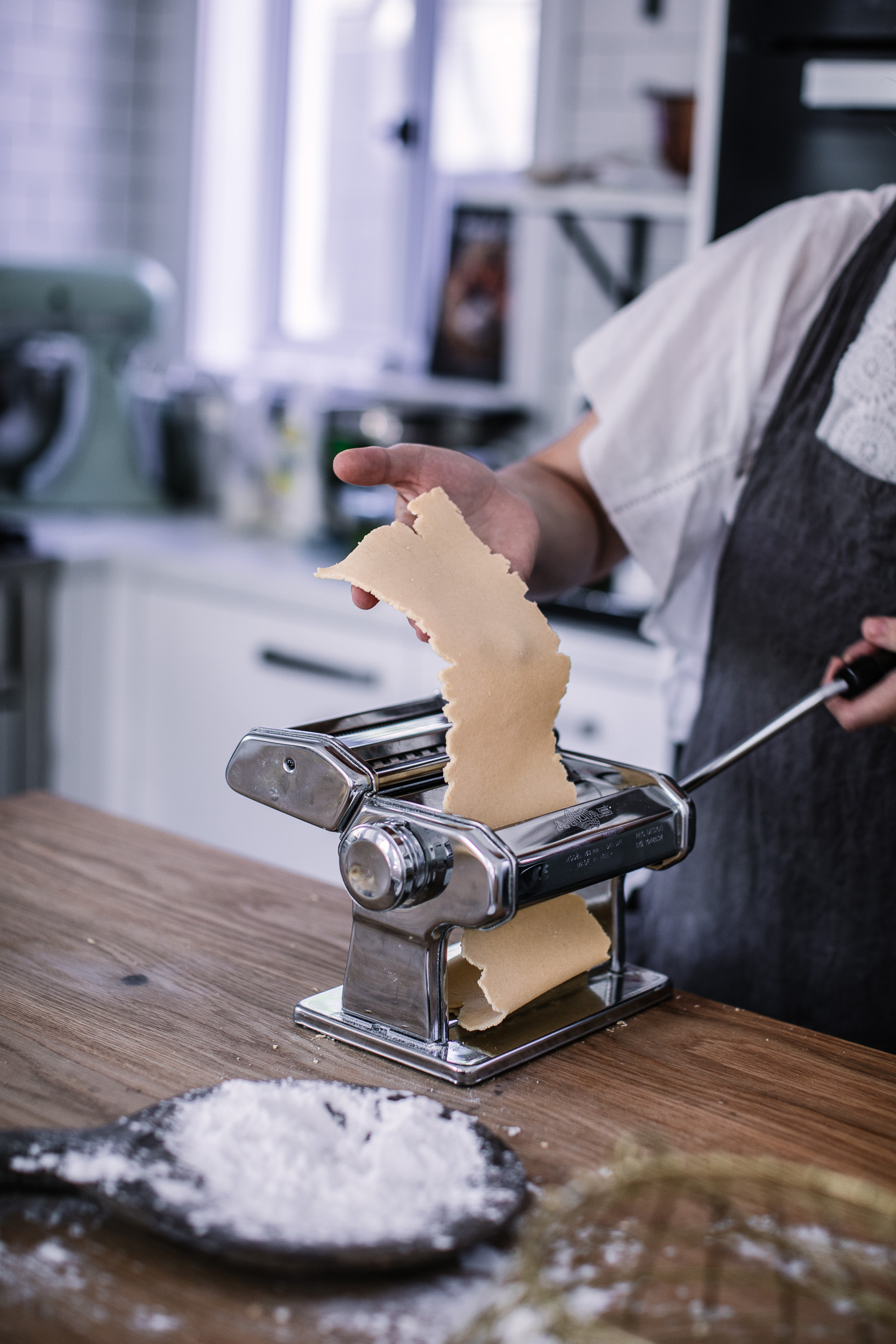
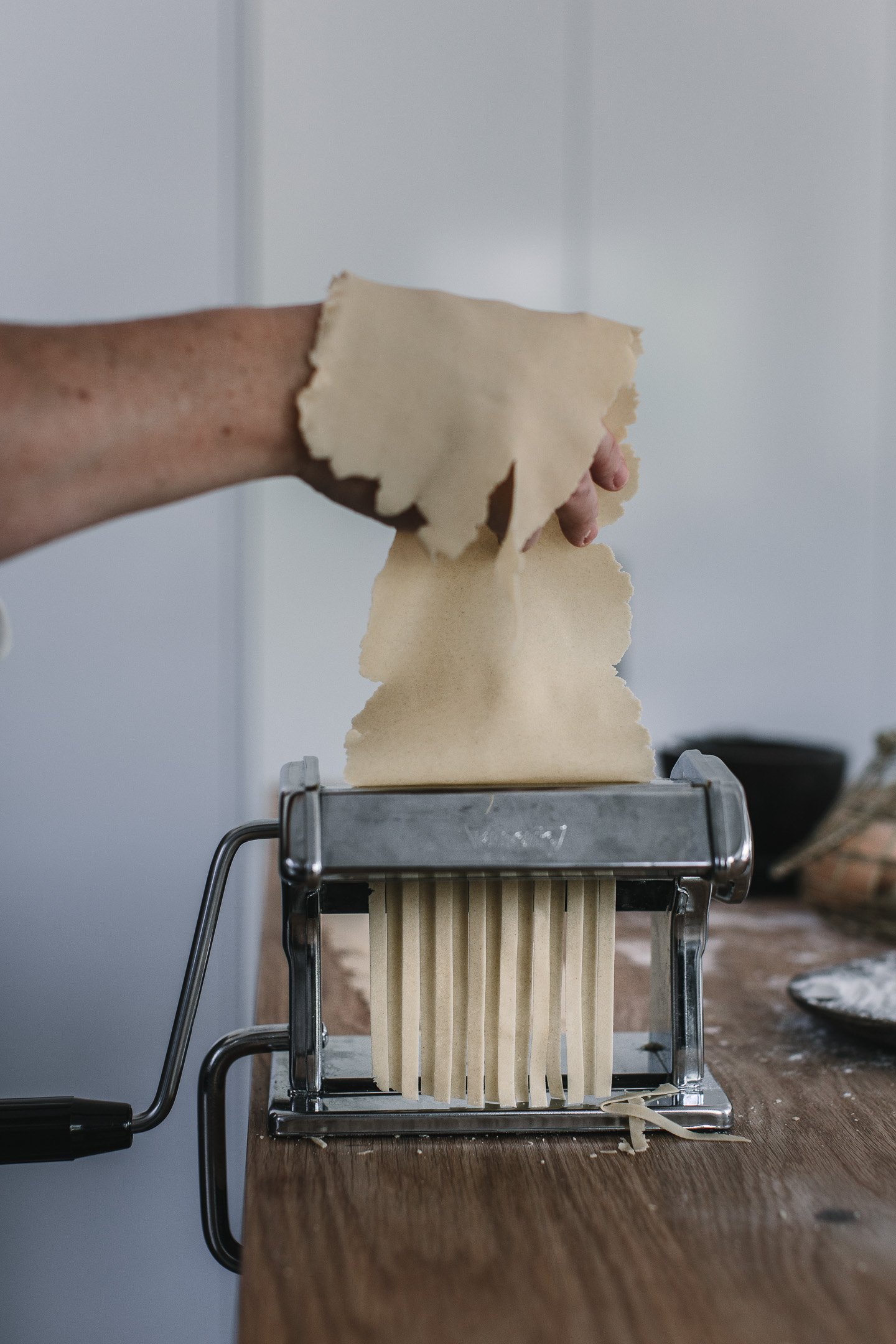
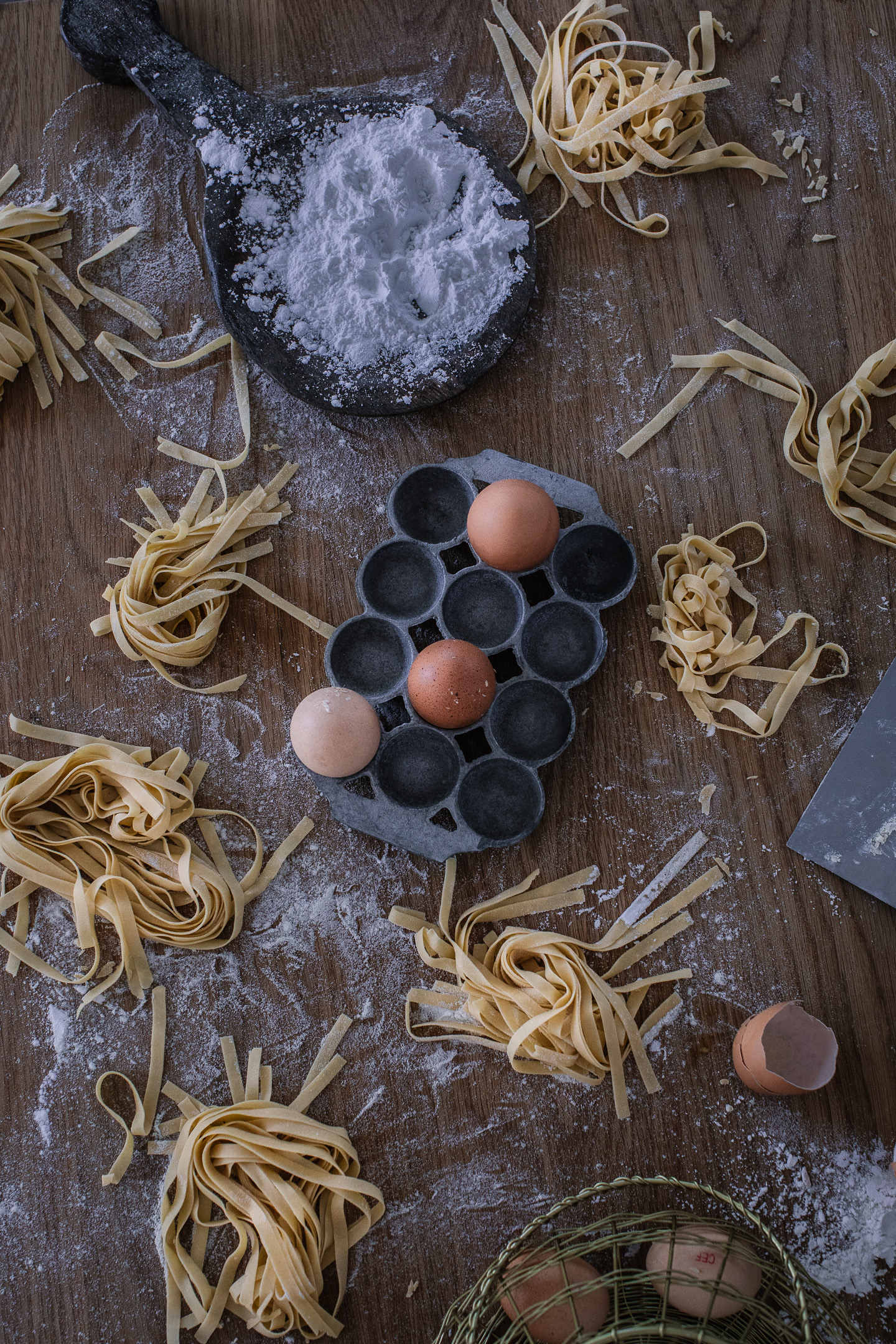
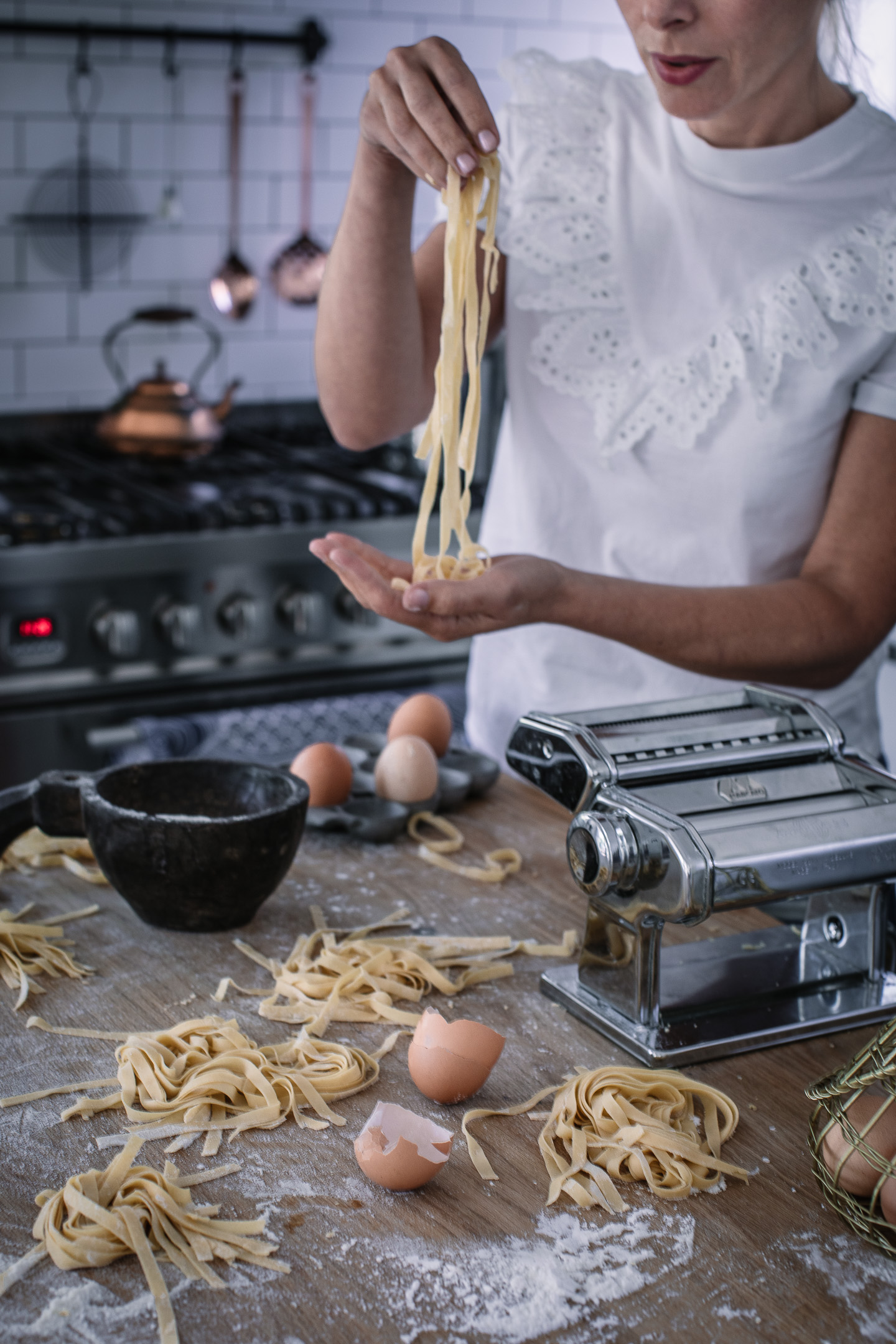
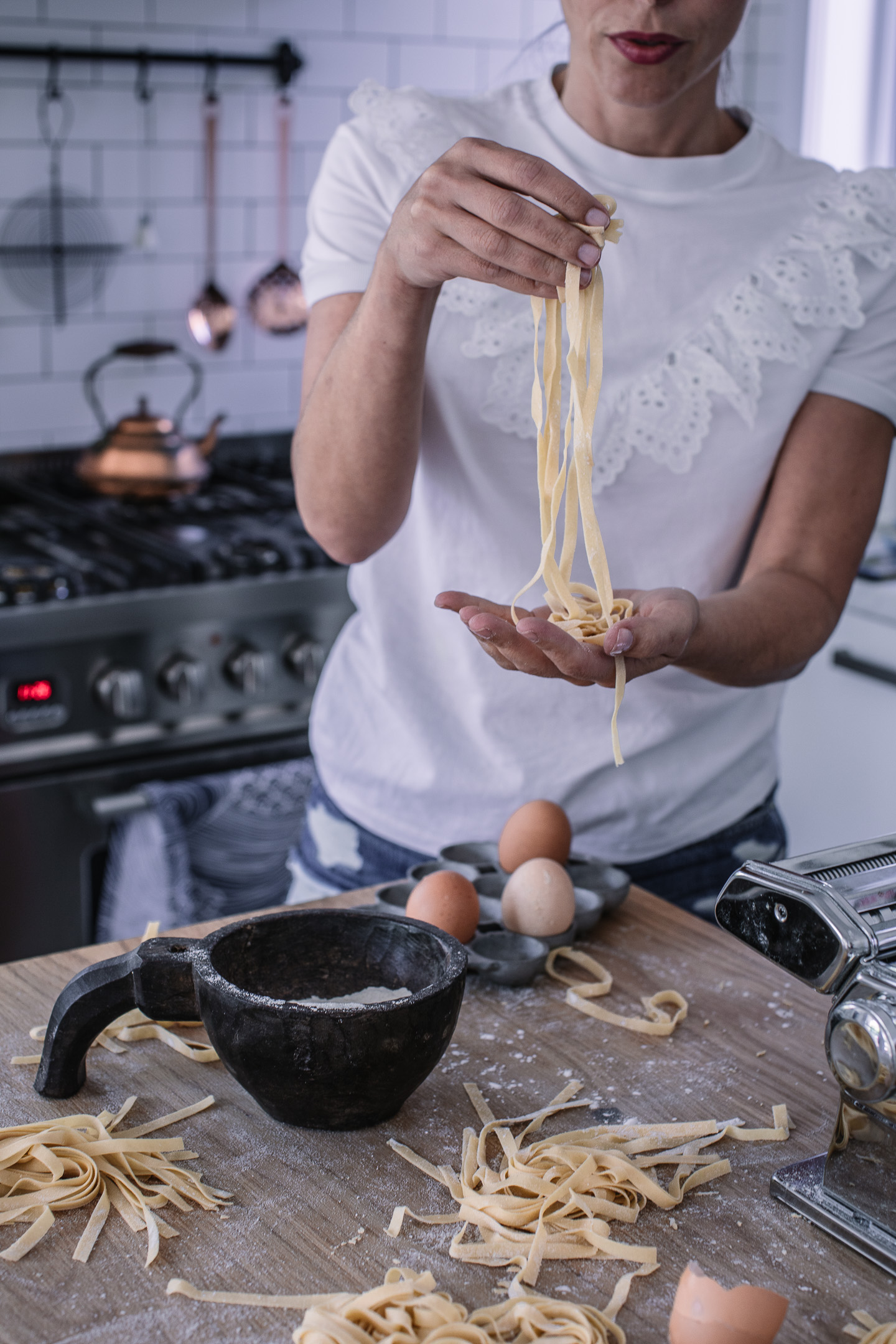
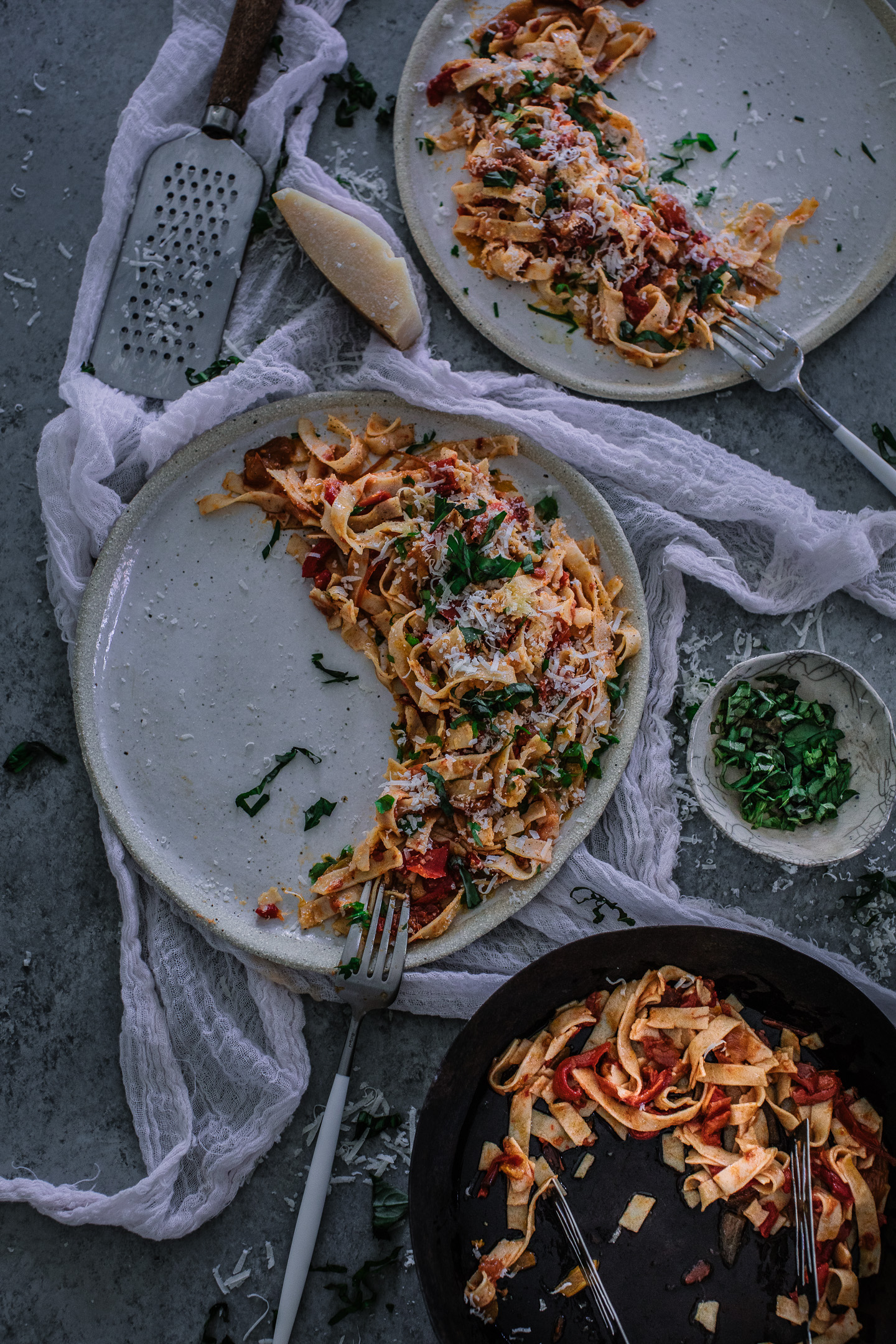
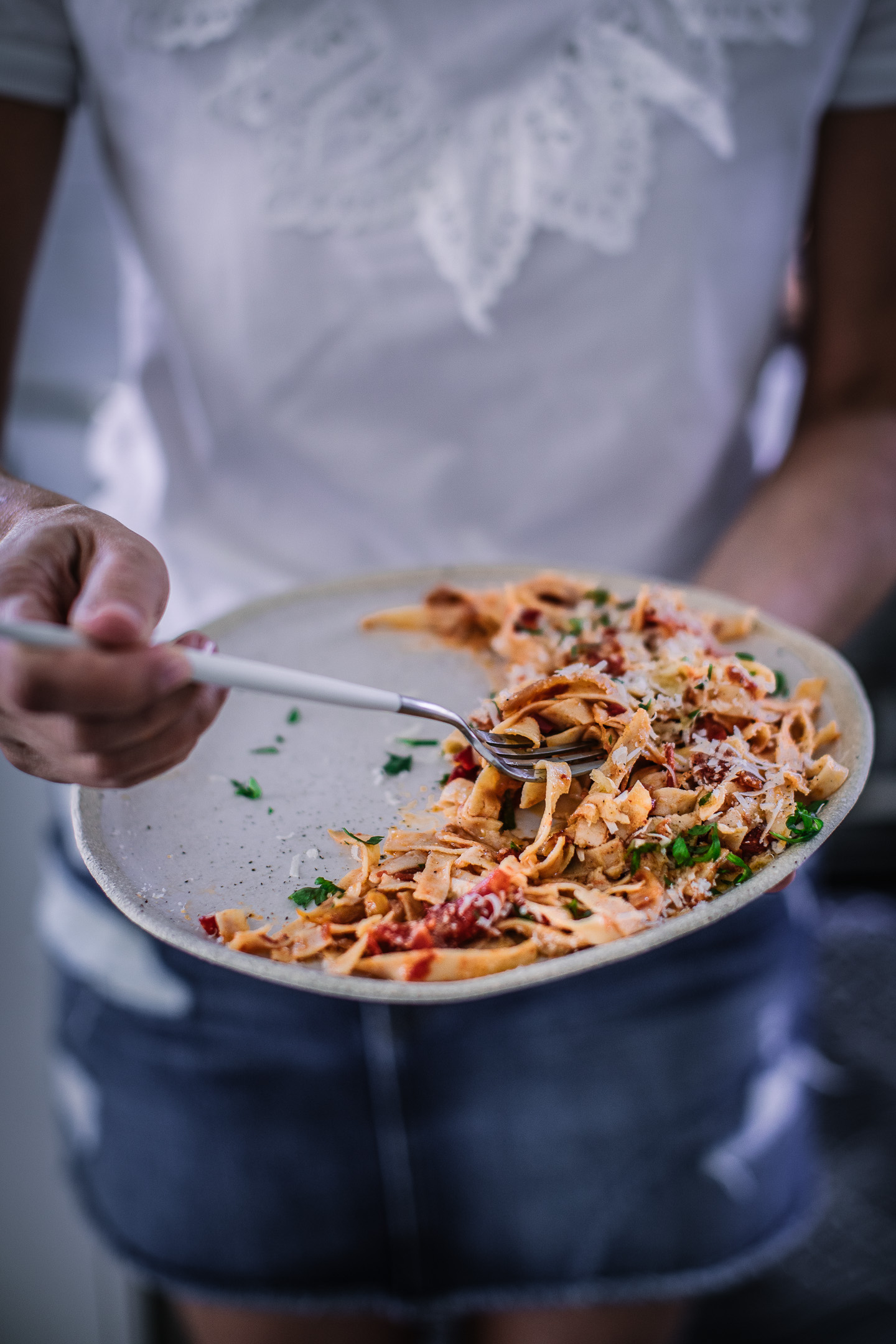
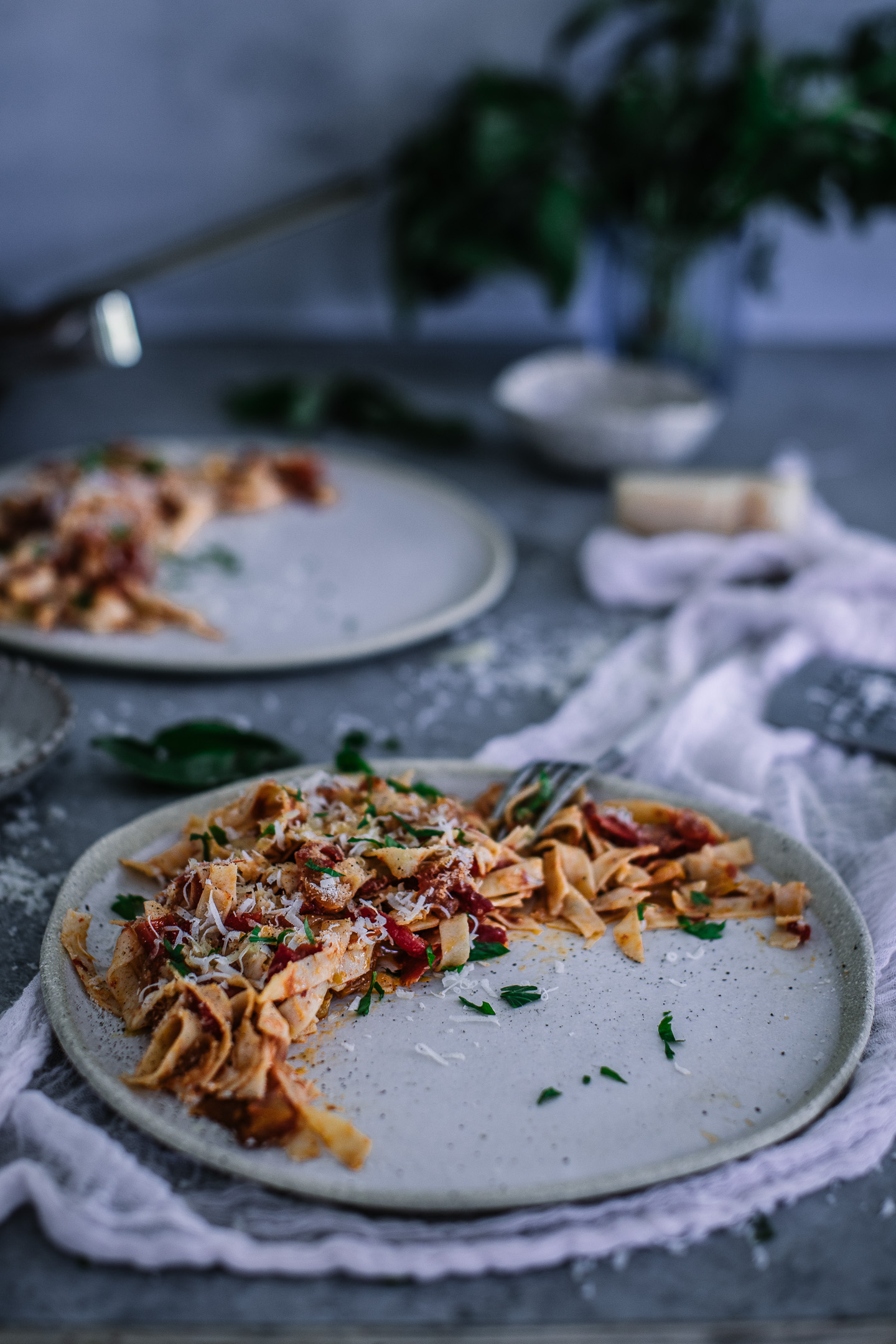
Just interested if you have suggestions for those without a thermomix? We can’t afford one. But would love g/f pasta
Hi Kara
The method is a conventional one. You just need a bowl and bench, the Thermomix variation is at the end. If you are referring to a pasta machine you can use a rolling pin to roll out the sheets. Place the dough between two sheets of paper to roll thinly as possible and cut into desired shape with a knife. You could make fat ribbons of pasta with a knife.
Am I able to use tapioca starch in place of the tapioca flour?
So excited about this recipe!!
Yes you can Payton.Enjoy.
At last, a homemade GF pasta recipe! 🙏 I can’t wait to try!
Enjoy Amanda
Can you help me understand what texture I’m looking for with the dough, as I’m having problems with to wet and too dry a dough to put through the rollers? maybe an egg weight would help?, as the issue seems to be the ratio of wet to dry in the mix… many thanks.
Hi Shona by large eggs I mean 55g weight. Initially the dough does look quite dry but as you pass it through the rollers it does soften. If you find you are still struggling with dryness even when you have rolled and thinned the sheet a few times then I would suggest you add an extra egg to your initial dough mixture.
Very tasty, our first attempt at using gluten free flour and everyone enjoyed it. I found the dough very dry and added another egg. Finally after several attempts through the past make, I gave up as the dough kept crumbling although it looked as if it was combined. After using a rolling pin and folding the dough, I put it back through the pasta maker, and it worked! Ended up with shortish tagliatelle strands.
Yes it does looking a little rough to start with but smooths out eventually. So glad you enjoyed it Nikki. Take care xx
Could you make the brown riceglour first in Thermomix or would it be too coarse? I do this for gf pizza bases but have never made pasta, let alone gluten free pasta!😊
Hi Kath
Yes it should work. When you mill the brown rice just ensure you mill it finely. Enjoy xx
I have an intolerance to rice! Is there anything I could use as a replacement?
Hi Meaghan
You could try cornflour as a replacement. Good luck.
I can’t have any grain at all!
Would it work with just all Tapioca flour/starch?
NO you need to blend the tapioca flour you could try buckwheat as an option.
Hi
Can l make this recipe in a Phillips electric pasta maker?
I have never used one but I do not see why not.
You sure make a mess in the kitchen. 😉 I know it’s for artistic pictures but it made me smile. I’m out of tapioca starch but am putting this on this week’s to do list after my son and I scored a great pasta roller at a thrift store. Thanks! I’ll report back on our results.
Oh what I do for art! Yes messy always looks great 🙂
Hi Helen, I would like to know the process for using this recipe for lasagne sheets please. Do we have to cook/boil it first? Thanks in anticipation.
Gottaloveyourwork
Regards
Jaine
Hi Jaine
No you do not need to boil them, the sheets will bake in the oven. Enjoy!
We’re partial to Cup4Cup, but feel free to go with your favorite. Whatever it is, just makes sure it’s a complete flour substitute. (That means that you can sub it in for normal flour in any given recipe without adjusting any of the ingredients.) Most flours like this are a blend of rice flour, tapioca flour, cornstarch, and a few other ingredients, and have a completely neutral taste. Xanthan gum plays a crucial role in this, and many other, gluten-free recipes. Made by mixing fermented sugars, it’s used as a stabilizer in many foods. In this case, it subs in for gluten, making your pasta dough flexible and elastic instead of dry and crumbly. It’s a must-have, and most grocery stores carry it!
My first attempt at making pasta (of any sort). We don’t have a pasta machine so rolled out on the kitchen bench with a rolling pin. Probably didn’t get it quite thin enough, and the fettuccine strips not equal widths 🙂 but it was delicious and passed the non GF free husband test 🙂 Messy, fun and satisfying both to make and to eat. Thanks for the recipe.
Glad you loved my gluten free pasta recipe Annette. It is harder without a pasta machine so well done!
Helen.